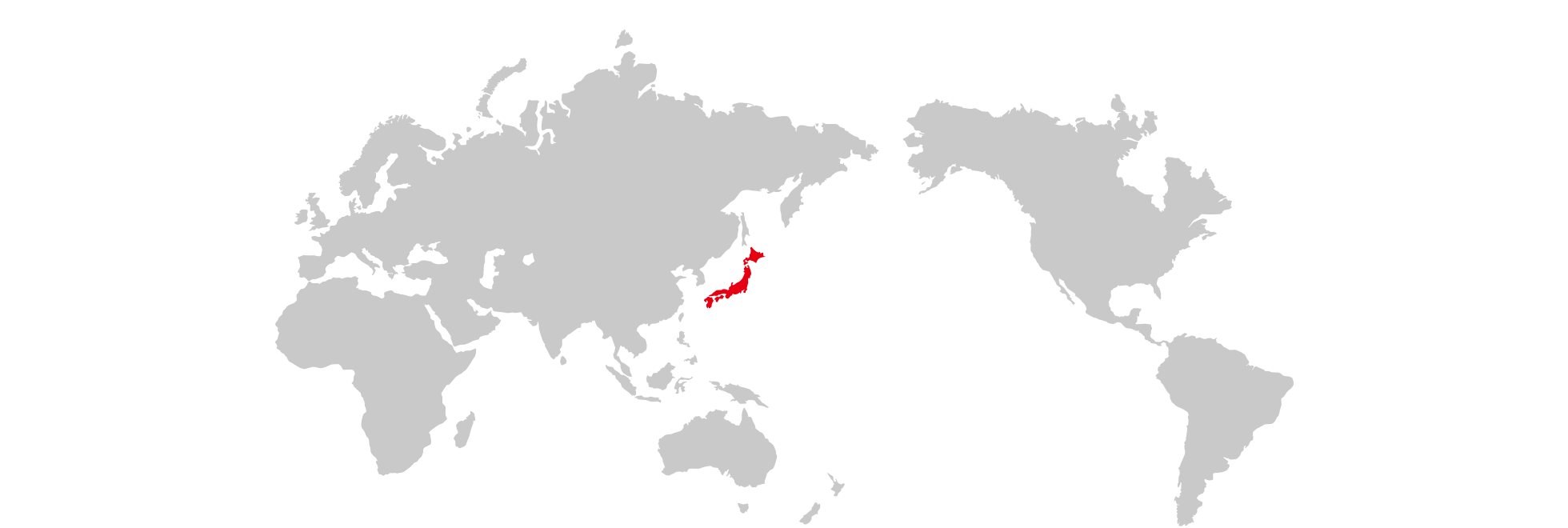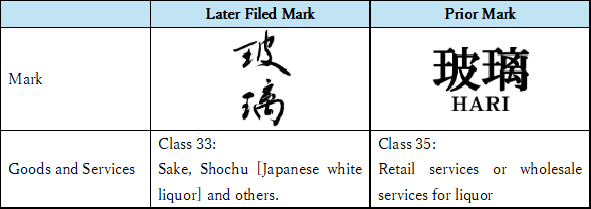

Intellectual Property News in Japan
On April 7, 2025, Japan’s Patent Office granted the first trademark registration under the recently adopted Letter of Consent System. This system allows for registration of trademarks similar or identical to existing registered marks with the owner’s consent, provided there is no risk of consumer confusion. Applicable to applications filed after April 1, 2024, the system requires evidence proving the absence of confusion between trademarks. Despite initial uncertainty regarding documentation, this case has shown that simple submissions sufficed. This system is expected to become an effective option for overcoming citation objections with prior trademarks. However, we need to continue monitoring the standards for “confusion criteria” since the decision to allow registration is ultimately made by the Patent Office, regardless of the consent by the prior trademark owner.

*The fonts are different but the Chinese characters are the same.
The wait is over! The changes to the Trademark Law, Design Law and Unfair Competition Law that we previously announced earlier here took affect on April 1, 2024. Some ether recent changes are as follows:
Abolishment of Power of Attorney Signatures
In light of the pressures posed by the Coronavirus Pandemic and with the goal of adopting more flexible procedures to correspond with the changes brought about by Covid-19, the JPO requirement for signatures and seals (Asian style stamps used in lieu of signatures) was done away with. For international clients this means that handwritten signatures are no longer required for Power of Attorney forms, on which currently the name and title of the representative (signatory) need only be typed. However, it is important to note that some documents such as Deeds of Assignment or License Agreements still require traditional signatures so be sure to keep this in mind.
Move Toward Digital Formats
As of April 1, 2024, the JPO has started to send most Registration and Renewal Certificates etc. online in digital (PDF) format. This will lead to significant cost savings by doing away with the need to mail paper certificates. Please note, however, that Registration Certificates for International Registrations designating Japan will continue to be issued in paper format for the foreseeable future.
Online Submission of Priority Documentation
Since January 1, 2024, it is now possible to submit Priority Documentation electronically (online). This means that a clear color scan of the documents is acceptable, and there is no longer any need for submission of the original documents.
1. Implementation of a Letter of Consent Policy
According to the Japanese Trademark Law it is not possible to register a trademark deemed similar to a mark that is already registered (Article 4 (1)(xi)). Until now, the Japanese practice did not allow for similar marks to be registered even if the applicant had consent from the prior rightsholder. However, this amendment will allow for the adoption of a Letter of Consent policy, and the JPO will permit registration of a mark by consent as long as the marks in question will not cause confusion among consumers and traders. The likelihood of confusion will be determined by the JPO Examiner, and if the marks are deemed confusing the submission of a Letter of Consent may not be sufficient to overcome a reason for rejection involving the citation of a prior mark.
2. Trademarks Including People’s Names
Currently, registration for a trademark that includes the name of another person (first and last) cannot be obtained without the consent of the person or people with the same name, which is often logistically impossible (Article 4 (1)(viii)). If the Examiners found anyone with that same name as that of the applied-for trademark, to date they would issue an Office Action requesting submission of consent from all persons with that name. However, after this amendment takes effect, if the same-named person is not already well known or in some way already famously associated with the goods/services (or field) in question, the JPO will no longer demand submission of authorization. This amendment is in response to many complaints, particularly from the fashion design industry, where designer’s names are commonly used as trademarks.
3. Simplification of Declarations Regarding the Exception to Lack of Novelty of Design
Under the Design Act, in principle, if a design is published before the application is filed, it cannot be registered. However, if a declaration is submitted within one year from the publication, it will be treated as an exception that the design was not published. In the past, when a design creator, etc. published a design multiple times, it was necessary to submit a certificate for each of the multiple times. With this amendment, only a single submission will be necessary.
4. Imitations Prohibited in the Metaverse
The Unfair Competition Prevention Law prohibits the act of making a dead copy (imitation of another person’s product) within three years of its sale/release (Article 2 (1)(iii) ). However, since data does not inherently have a “form”, until now it was not clear whether or not this regulation would apply to dead copies of fashion and/or product designs in the so-called “Metaverse.” However, the upcoming revision will make it clear that this the scope of this regulation will include the Metaverse. In other words, due to the revision, the act of copying other people’s products on the Metaverse has been and will continue to be prohibited.
For International Applications or subsequent designations filed after April 1, 2023, the Japan Patent Office (JPO) will no longer utilize its current payment system consisting of two-part individual fees. In accordance with the revision of the Trademark Act, as of April 1, 2023 the JPO will shift to a payment system wherein all fees must be paid at the time of filing.
The JPO has also adopted a new policy whereby the certified copy of a registration decision is electronically sent to the either the IR applicant or their International Bureau (IB) representative via the IB (but not to the local representative in Japan).
These changes will apply to applications or subsequent designations whose filing date is on or after April 1, 2023.
For further information, see Information Notice No. 8/2023 and the JPO website.
The Trademark Examination Manual has been revised, effective April 2, 2018.
In Japan, when an application designates a number of sub-classes in a single class that is more than the stipulated amount, under Article 3.1 of the Trademark Act an Office Action may be issued requiring submission of either a) proof of use or b)-1 a Declaration of “Intent to Use” and also b)-2 a business plan.
http://www.jpo.go.jp/tetuzuki_e/t_tokkyo_e/pdf/41-100-03.pdf
Through April 1, 2018 the “stipulated amount” mentioned above regarding standard goods and services (excluding retail services) was “eight or more,” and the stipulated amount for retail services was “two or more.” However, regarding the treatment of the former case (goods and services, excluding retail services), due to the revision, the stipulated amount of sub-classes that can be designated without triggering an Office Action was raised from seven (7) to twenty-two (22), effective April 2, 2018. In addition, the way in which these sub-classes are counted was also changed.
Manner of Counting Sub-Classes to Date
Several sub-classes that were attributed to a single specification of goods were counted as “one” sub-class. Due to this, by adding a specification of goods that has several sub-classes, the total number of sub-classes could technically be reduced.
Example:
|
When you add “seasonings, other than spices” -> |
|
Manner of Counting Sub-Classes as of April 2, 2018
From now on, each sub-class attributed to a specification of goods will be counted individually. Accordingly, unlike as was possible previously and indicated above, there is no way to reduce to total number of calculated sub-classes.
Example:
| Goods | Sub-class |
| soya bean paste | 31A01 |
| soy sauce | 31A02 |
| sugar | 31A03 |
| cooking salt | 31A04 |
| Umami seasonings | 31A05 |
| Seasonings, other than spices | 31A01 31A02 31A03 31A04 31A05 |
| Sub-Class Total | 5 |
WARNING:
While this revision actually raised the ceiling on the stipulated number of sub-classes allowed (up to 22), because of the change in the way the sub-classes are counted, an application designating the same goods or service as previously might still be the recipient of an Office Action (Reason for Refusal).